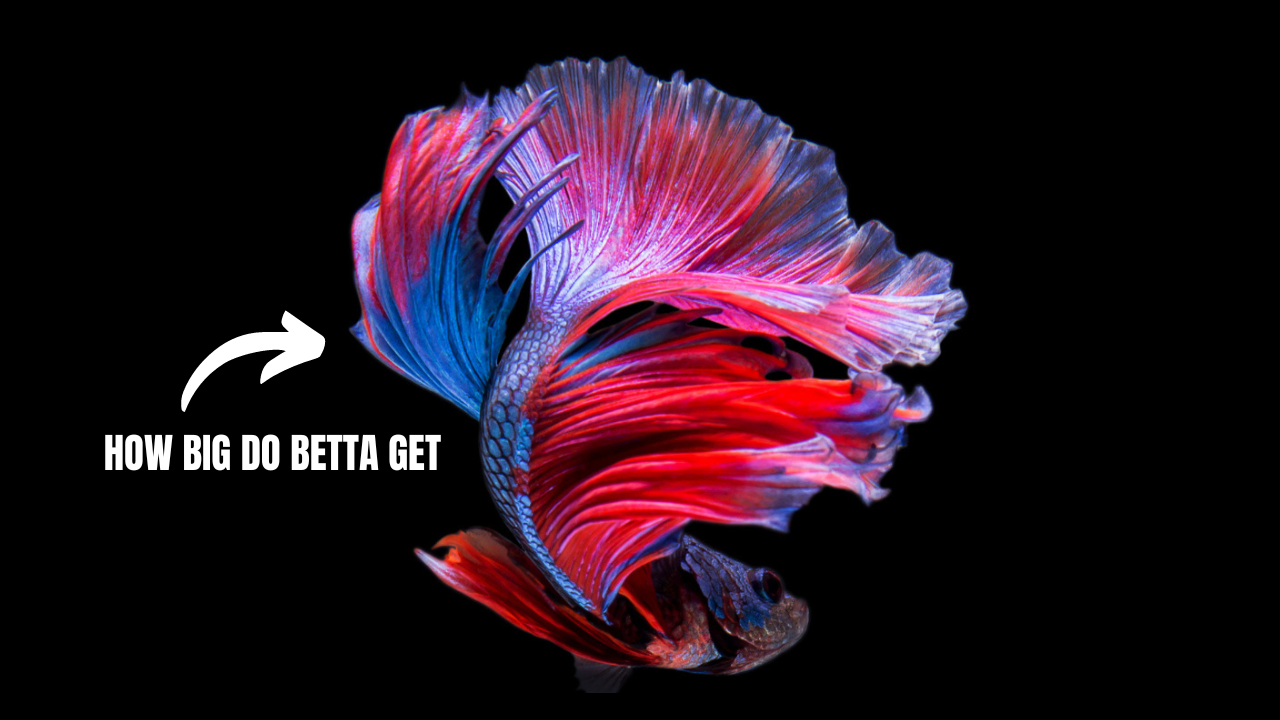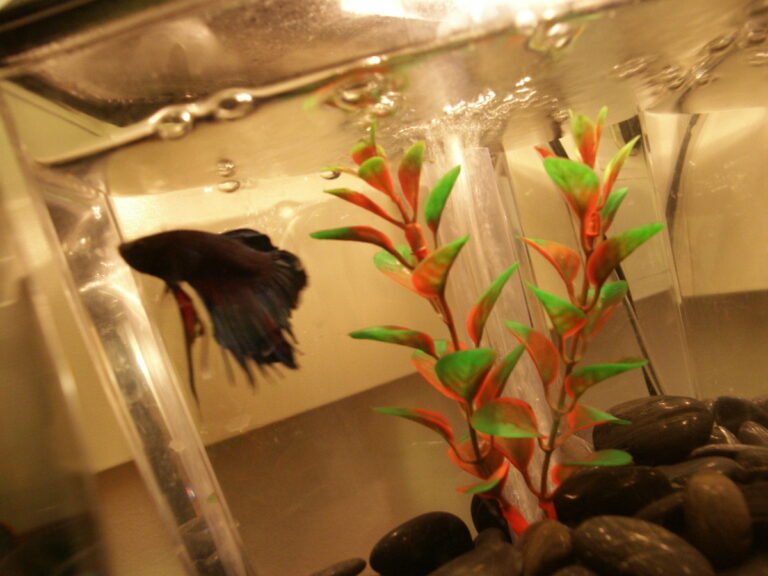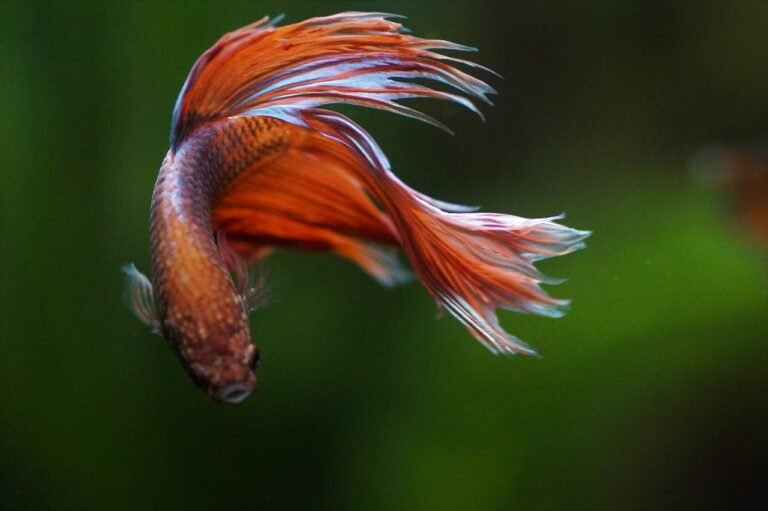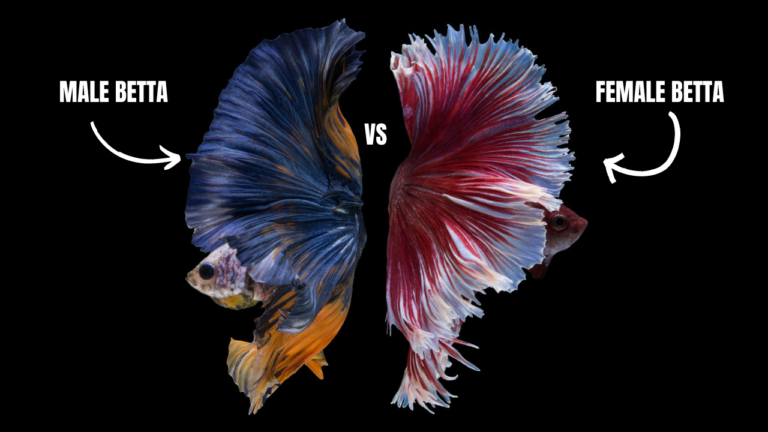Betta fish, or Siamese fighting fish, are among the most popular freshwater aquarium fish. These vibrant and fascinating creatures have captured the hearts of fish enthusiasts worldwide with their striking colors, flowing fins, and unique personalities. As you embark on the journey of owning a betta fish, one of the most common questions is, “How big can betta fish get?”
These magnificent fish are renowned for their compact size, which is ideal for nano aquariums and desktop tanks. However, their size can vary depending on several factors. In this comprehensive guide, we’ll explore the world of betta fish and unravel the mysteries surrounding their growth potential.
Understanding the size of betta
Betta fish belong to the Osphronemidae family, which encompasses various species of labyrinth fish. These fish are native to the tropical regions of Southeast Asia, where they thrive in shallow, stagnant waters like rice paddies and drainage ditches. In their natural habitats, betta fish have adapted to survive in confined spaces, influencing their size.
When discussing the size of betta fish, it’s essential to understand that they are sexually dimorphic, meaning that males and females exhibit distinct physical characteristics. Male bettas are typically more extensive and colorful than their female counterparts, thanks to their magnificent flowing fins and vibrant hues.
Factors that affect the size of betta fish
Several factors can influence the size of a betta fish, including genetics, water quality, diet, and tank conditions. Let’s explore each of these factors in more detail:
- Genetics: Like most living beings, a betta fish’s size is partly determined by its genetic makeup. Some betta fish species or strains naturally grow larger or smaller than others.
- Water quality: Maintaining optimal water conditions is crucial for the health and growth of betta fish. Poor water quality and high levels of ammonia, nitrites, and nitrates can stunt their growth and lead to various health issues.
- Diet: A well-balanced and nutrient-rich diet plays a vital role in the growth and development of betta fish. A varied diet with high-quality protein sources, such as live or frozen foods, can contribute to their overall size and vitality.
- Tank conditions: The tank size and environment you provide for your betta fish can significantly impact their growth. Bettas in cramped or overcrowded conditions may experience stunted growth due to stress and limited resources.
How big can betta fish get?
The size of a betta fish can vary greatly depending on the specific species, strain, and environmental conditions. On average, most domesticated betta fish reach a length of approximately 2.5 to 3 inches (6.35 to 7.62 cm) when fully grown. However, some exceptional specimens can produce more significant than this range.
It’s important to note that a betta fish’s size is not necessarily an indicator of its overall health or lifespan. Well-cared-for bettas can thrive and live happily, regardless of their size.
The different sizes of betta fish – small, medium, and large
Betta fish can be broadly categorized into three sizes: small, medium, and large.
- Small betta fish:
- Size range: 1.5 to 2 inches (3.81 to 5.08 cm)
- These are typically the most common size for domesticated betta fish.
- They can thrive in smaller aquariums or desktop tanks.
- Medium betta fish:
- Size range: 2 to 3 inches (5.08 to 7.62 cm)
- This is the average size range for most betta fish species.
- They require a larger tank or aquarium to accommodate their size.
- Large betta fish:
- Size range: 3 to 4 inches (7.62 to 10.16 cm)
- These are considered giants in the betta fish world.
- They require spacious aquariums or tanks to accommodate their size and swimming needs.
It’s important to note that these size ranges are approximate, and individual bettas may vary based on the factors mentioned earlier.
Creating the perfect environment
Providing the proper environment is crucial if you aspire to have a large, thriving betta fish. Here are some tips to help you create the perfect habitat for your giant betta:
- Tank size: Aim for a large betta fish tank with a minimum capacity of 5 gallons (18.93 liters). Larger tanks provide more swimming space and better water quality, promoting their growth and well-being.
- Water parameters: Maintain optimal water conditions by performing regular partial water changes, using a high-quality filter, and monitoring ammonia, nitrite, and nitrate levels. Stable water parameters are essential for the health and growth of your betta.
- Decorations and hiding spots: Provide plenty of hiding spots, such as live plants, driftwood, or caves, to create a comfortable and stress-free environment for your betta. This can help reduce aggression and promote security, contributing to their growth.
- Tank mates: While bettas are often kept as solitary fish, some larger species or strains may coexist with compatible tank mates. However, exercise caution and thoroughly research before introducing other fish or invertebrates to avoid potential conflicts or stress.
Choosing the right tank size
Selecting the appropriate betta fish tank size is crucial for the health and well-being. While bettas can survive in smaller containers, they thrive in larger environments that provide ample swimming space and better water quality. Here’s a general guideline for choosing the right tank size based on the expected size of your betta:
- Small betta fish: A minimum of 2.5 gallons (9.46 liters)
- Medium betta fish: A minimum of 5 gallons (18.93 liters)
- Large betta fish: A minimum of 10 gallons (37.85 liters)
It’s important to remember that these are minimum recommendations, and larger tanks are always better for the fish’s overall health and growth potential. Additionally, consider the tank’s dimensions, as bettas prefer horizontal swimming space over vertical space.
Feeding and caring for a big betta
Proper nutrition and care are essential for your big betta fish to reach its full potential. Here are some tips for feeding and caring for a giant betta:
- Diet:
- Offer a varied diet consisting of high-quality betta pellets or flakes and live or frozen foods like brine shrimp, daphnia, or bloodworms.
- Feed your betta fish 2-3 times daily, offering only what they can consume within a few minutes.
- Avoid overfeeding, which can lead to health issues and poor water quality.
- Water changes:
- Perform regular partial water changes (25-50%) to maintain optimal water conditions.
- Use a high-quality dechlorinator to remove chlorine and heavy metals from tap water.
- Vacuum the gravel or substrate during water changes to remove accumulated waste or debris.
- Tank maintenance:
- Clean the tank regularly by removing uneaten food, debris, or algae buildup.
- Perform partial water changes and filter maintenance as needed.
- Monitor water parameters regularly and make adjustments if necessary.
- Enrichment:
- Provide plenty of hiding spots, plants, and decorations to create a stimulating environment for your betta.
- If appropriate, consider adding compatible tank mates to provide social interaction and stimulation.
By following these guidelines, you can create a thriving environment that supports your big betta fish’s growth and overall well-being.
Common misconceptions about betta fish size
Despite their popularity, several misconceptions could be improved by the betta fish’s size. Let’s address some of these common myths:
- Myth: Betta fish can live in small bowls or vases.
- Reality: While bettas can survive in small containers for a short period, they thrive in larger, properly filtered aquariums with optimal water quality.
- Myth: Bigger is always better when it comes to betta fish.
- Reality: While more giant bettas can be impressive, size alone is not an indicator of health or lifespan. Proper care and environmental conditions are more important than size.
- Myth: Male bettas are always larger than females.
- Reality: While males are typically larger than females, there can be exceptions, especially in certain strains or species.
- Myth: Bettas don’t need a heater or filter.
- Reality: Bettas are tropical fish and require warm water temperatures (78-82°F or 25.6-27.8°C) and proper filtration for their well-being and growth.
Understanding and debunking these myths allows you to provide your betta fish with the best possible care and environment, regardless of their size.
Clearing Up !
Betta fish are genuinely remarkable creatures; their size is just one aspect of their captivating charm. Whether you have a small, medium, or large betta, each fish is unique and deserving of the best possible care. By understanding the factors that influence their size and providing the right environment, you can enjoy the beauty and personality of your big betta fish for years to come.
If you’re ready to own a big and beautiful betta fish, consider visiting our online store. We offer a wide range of high-quality aquarium supplies, including tanks, filters, heaters, and decorations, to help you create the perfect environment for your new friend. Our knowledgeable staff is always available to guide you through the process and ensure you have everything you need for a successful and rewarding betta fish-keeping experience.
Remember, the size of your betta fish is not the ultimate measure of success. What truly matters is providing them with a loving home, proper care, and an environment that allows them to thrive. Embrace the beauty and individuality of your betta, and enjoy the rewarding journey of being a responsible and dedicated fish keeper.







